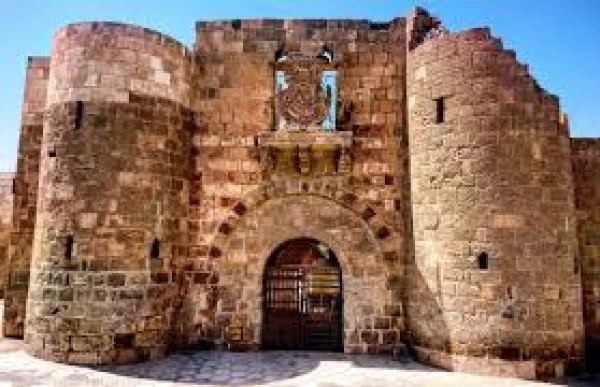
Aqaba Fort | Jordan
Aqaba Fort
The beautiful Geographical location of Jordan called Aqaba is at the southern end of the country on the coastline of the red sea nearly two hundred kilometers from the capital of Jordan Amman, which sites an unparalleled status, being the only and beautiful sea coast of Jordan.
The beauty and distinctiveness of Aqaba, which was formerly known as "Ayla" before gaining its famous name during the Mamluk era and became "Aqaba," which translates to "the rugged road in the mountain," are never lost on a visitor.
This Jordanian “pearl” has a strategic location on the sea, where the roads between the two continents of Asia and Africa intersect, so it was home to many tribes and peoples four thousand years ago. It was a distinctive corridor for traders traveling between the Hejaz and the southern Arabian Peninsula, Egypt and the Levant. Aqaba continues to be an important trading gateway today.
Aqaba Castle, the ancient fortress complex is situated in the very centre of the city of Aqaba in southern Jordan, specifically by the Gulf of Aqaba, the castle is a recent construction of the region believed to be from the end of the Mamlouk period but is a museum today. The Aqaba mast structure, which was built in 2004 on the grounds next to the fort and is used to raise the Great Arab Revolt flag, is one of the fortress's most remarkable features. At the time, it was the highest flagpole in the world.
Aqaba Castle was built between the 7th and 13th centuries AD, and its towers were constructed between the 13th and 19th centuries AD, and the castle had a great gate with an archway that extended to the castle courtyard with a vestibule and arches.
It was rebuilt in the 14th century by the Mamluk Sultan Qansuwa al-Ghuri, and after the Great Arab Revolt, Jordanian tribes used it as a headquarters and a launchpad for the liberation of the Levant. The western wall and tower on the northern side were destroyed during World War I. An inscription above the castle's main entrance bears the date of the entry of the Hashemite forces in 1917.














